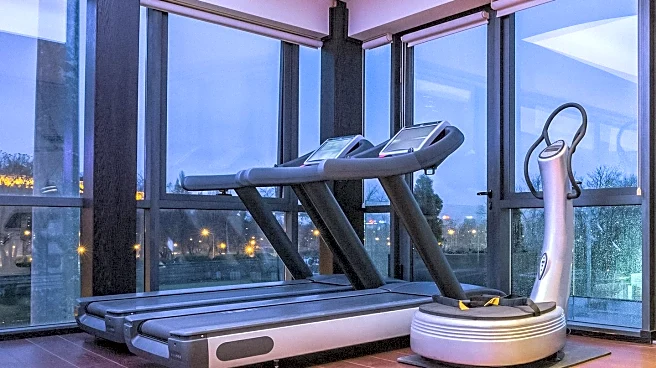What's Happening?
The 'duck walk' exercise is gaining attention as an effective lower-body strength training move. Personal trainer Sabrina Pace-Humphreys highlights its benefits for targeting multiple muscle groups, including
quads, glutes, hamstrings, and core. The exercise is particularly useful for runners, aiding in strength and stability for uphill sections. The duck walk involves maintaining a deep squat position while taking small steps forward, focusing on balance and controlled movement. It can be modified for beginners or intensified with resistance bands for advanced practitioners.
Why It's Important?
The duck walk offers a simple yet effective way to enhance lower-body strength and stability, crucial for athletes and fitness enthusiasts. Its accessibility makes it suitable for individuals who may not have access to gym facilities, promoting physical activity in diverse settings. As strength training becomes increasingly recognized for its health benefits, exercises like the duck walk can play a role in encouraging broader participation in fitness activities, contributing to overall public health.
What's Next?
Fitness professionals may incorporate the duck walk into training programs, emphasizing its benefits for lower-body strength and stability. As awareness grows, more individuals may adopt the exercise, potentially leading to variations and new techniques. The popularity of the duck walk could inspire further research into its effectiveness and applications in different sports and fitness contexts.
Beyond the Headlines
The rise of exercises like the duck walk reflects a cultural shift towards functional fitness, focusing on movements that enhance everyday physical capabilities. This trend may influence the fitness industry, encouraging the development of programs that prioritize practical strength and mobility over traditional gym workouts.











